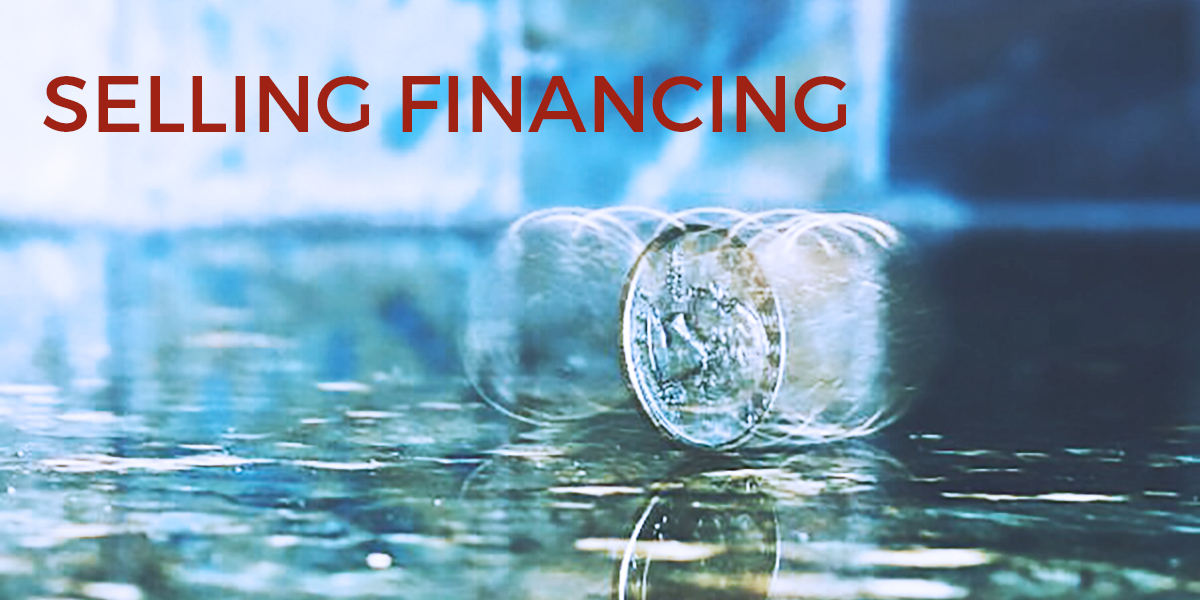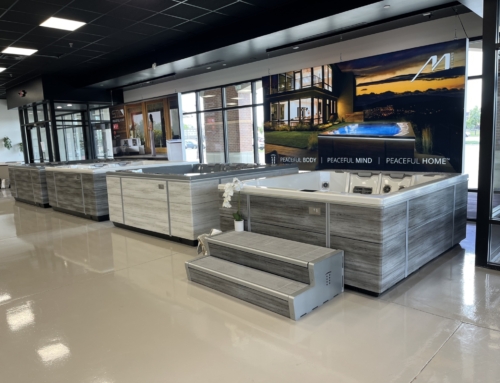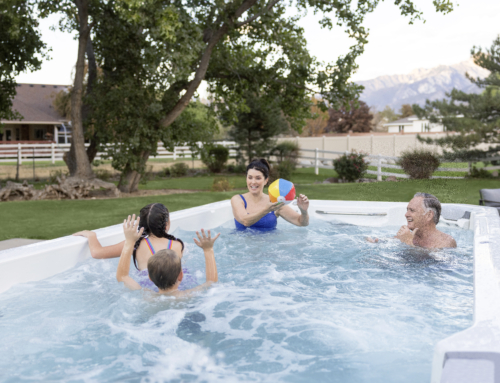 It’s hardly a secret that affordability is one of the biggest hurdles tripping up hot tub consumers along their buying journey. So how does a spa retailer turn this hurdle into just another stepping stone for these potential customers? The same way car, jewelry, furniture, and large appliance retailers make their products more accessible to their customers: financing.
It’s hardly a secret that affordability is one of the biggest hurdles tripping up hot tub consumers along their buying journey. So how does a spa retailer turn this hurdle into just another stepping stone for these potential customers? The same way car, jewelry, furniture, and large appliance retailers make their products more accessible to their customers: financing.
Essentially, consumer financing offers the opportunity for your customers buy the products they want today while making payments over time. This presents an opportunity for more sales for your business.
In his article on cash flow in SGB (previously Sporting Goods Business), Dennis Murphy wrote, “A financing program can be a key marketing vehicle for your store, because it provides an incentive for consumers to buy and can be a mechanism to track sales data and drive repeat business. When used in a smart way, a financing program can be the hub of the retail marketing wheel.”
Spa dealers commonly ask if the the benefits of financing outweigh the cost. And if they do, what’s the best way to move forward with a financing program?
Business Benefits of Finance Plans
Let’s briefly run through the list of benefits financing provides to hot tub dealers. Most obviously, offering payment options increases sales opportunities. With financing, the potential for lost sales due to affordability issues can be avoided at any point during the purchase decision.
Parent of what was previously GE Capital Retail Bank, Synchrony Financial reports that 89% of their cardholders say financing made their large purchase more affordable, and 76% of these cardholders always seek promotional financing options when making a major purchase.
The financial company conducted other industry-specific studies that involve major consumer products comparable to hot tubs. Here’s a summary of their findings:
- 46% of furniture cardholders would choose another retailer or not make the purchase if a financing promotion was not available.
- 55% of sportings goods customers said they would not have made the purchase, or would have gone to another merchant, if financing options weren’t available.
- Home improvement cardholders used additional funds available to upgrade or add features, pay for installation or buy a more expensive model/version.
So what does this say for the financing potential within the spa industry? Rick Hebb of Isaacs Pool and Spas in Johnson City, TN, credits his dealership’s finance program for boosting store sales 30-40%.
Nick Kasten from Arizona Hot Tub Company notes that it took his dealership less than a year to recognize a significant boost in sales once they started offering financing. “We had to get over the fact that, unlike cars, hot tubs don’t come with their own VIN numbers; so financing them is basically an unsecured line of credit.”
These results indicate that offering financing adds value for you and your spa customers. It shortens the sale cycle, facilitates an immediate buying decision, and allows customers to purchase the spa and features they want rather than just those they have to settle for. Plus, purchase totals tend to be greater under financing than those non-financed transactions.
Which financing strategy is right for you?
As a dealer, there are typically two different paths you can take. The first is through an established hot tub manufacturer’s program and the second is directly through a bank, credit union, or other financing company.
For smaller to mid-size dealerships, going through the manufacturer may be the best fit since it is typically more difficult to qualify for financing programs as an independent, lower volume retailer. Lower rates and better access to periodic promotions at reduced rates are also advantages for retailers to go with a brand’s finance program. Plus, dealers can minimize risk and ensure reliability of the financing when partnering with a manufacturer.
Dealers who are larger or have been in business longer may be set up better for finding an independent financial partner. Having identified customer needs in their local area, both Arizona Hot Tub Company and Isaacs Pool and Spas have established their finance programs with separate financial companies.
What should a dealer look for in a financing program?
When considering a finance program, the number one priority for a dealer should be working with a trusted partner. Sure, financing can boost sales…as long as the backer of the financing follows through. A dealer also wants to ensure the program is easy to implement. This means offering a simple and straightforward customer application, no enrollment fee, and quick electronic funding to the retailer’s bank account.
When considering a finance program, the number one priority for a dealer should be working with a trusted partner.
Next to reliability, relationship support offered is critical to the success of a hot tub dealer’s finance program. You’ll want to have online access to some form of resource center that provides training, processing, and reporting tools for your business. Live webinar training sessions with the finance partner serve as an excellent way of ensuring all your questions about the program are answered.
Service is important, but what about the finance product itself? As a spa retailer, you want to make sure the program you use offers competitive discount rates, along with periodic financing promotions and rebate opportunities based on financing volume. Some dealers may want to look for a variety of products offered to meet different customer needs and circumstances, such as low-interest, long-term, and no-interest loans. But others, like Isaacs, may prefer to offer just one financing option to simplify processes that allow the store to incorporate one cost into overall pricing.
Each of these products typically presents varying dealer costs. When these start getting to double digits, you may think no way can a dealer cover that kind of cost. But Kasten would argue that’s not the case at all. In their experience, both Hebb and Kasten have learned that consumers are more concerned with how much it will cost them each month rather than the overall price.
Here’s a list of questions dealers should ask when considering a financing program:
- How do I qualify?
- Why do I have to qualify?
- How do I enroll?
- Where do I send my enrollment documents?
- How long does the enrollment process take?
- How do I know if my enrollment has been verified?
After the enrollment process, what is the next step? - What materials can I expect?
- What kind of training is provided?
- When can I start submitting applications?
- Will I need any logins or access codes?
- What is the pricing for the program?
- Does this program work for commercial projects?
The Biggest Question: How do I implement the program within my dealership?
When considering a financing program, a retailer needs to devise effective in-store strategies that maximize the value the program brings to the business. Yes, this means that your financing options should be a part of your overall marketing and advertising plan.
A dealer should prepare the financing program for the marketplace, just as it would a new spa product line.
A dealer should prepare the financing program for the marketplace, just as it would a new spa product line. Understanding who the potential customers of financing are and how to discover that is key. Hebb reminds his colleagues, “We don’t live in someone else’s pocket.” And it shouldn’t be assumed that financing is only for cash-strapped consumers. Wealthier consumers with limited funds may appreciate the option of using someone else’s money for six months to a year just as much as any other customer. In fact, if one were to look into the demographics of Isaacs’ local marketplace, you would find quite a bit of money in and around Johnson City, TN. Even so, a good chunk of their business comes through financing. Kasten reported a similar trend in his market in Prescott, AZ. Many people simply prefer to buy with payments.
Then there are millenials, 63% of which don’t even own credit cards. Yet they have money and are, in fact, outpacing other age groups in retirement savings. So even though they’re making money and saving money, with no credit card available they could only provide cash or check for their spa purchase. I’m going out on a limb here, but I presume most dealers do not or would prefer not to accept personal checks.
Hebb won’t argue that it’s important to find out why the customer is thinking about a spa while building rapport. But he believes it’s just as important to determine how a customer plans to pay for their hot tub at this stage of the sale. In his and Kasten’s experience, most buyers like the convenience of payment options even if it comes at a slightly higher overall cost. Hebb simply asks, “How do you plan to finance your spa purchase?”
Promoting Availability of Payment Options
 Once you identify your financing customers, you can determine the best avenues for letting them know about the program. In a word, advertise. If your customers don’t know you’re offering financing, they won’t be able to take advantage of it and you’ll lose out. Isaacs primarily uses local TV advertising to promote financing options.
Once you identify your financing customers, you can determine the best avenues for letting them know about the program. In a word, advertise. If your customers don’t know you’re offering financing, they won’t be able to take advantage of it and you’ll lose out. Isaacs primarily uses local TV advertising to promote financing options.
Putting prominent signage about financing options in your store windows, on the sales floor, and at the point-of-sale can convert a browser into a buyer. If the store is having a limited-time financing promotion, that should be emphasized. And of course, you should put banners on your website that shout “Payment Options Available.”
Kasten relies on product price tags to promote his financing program. His ultimate goal is to show customers that his store’s hot tubs can fit their personal monthly budget. And he’s found that 0% financing, at least in the Prescott, Arizona market, has worked best despite the higher cost that is passed on to the buyer.
In addition to having the MSRP or market value on each price tag, Kasten gets extra benefit from displaying monthly payment options. Instead of having to come out and ask about how the customer plans to pay, he waits and listens for their response to the information on the price tag. If the customers are quick to recognize budget fit, then he has a good idea that they plan to finance.
Staff Training
In addition to marketing and advertising tactics, the hot tub dealer expecting a successful implementation needs to reinforce selling processes through regular staff training. This can simply start with communicating preferred word choice. Which wording works best to present financing options to customers?
First, we’ll mention the obvious: “payment options” typically sounds more appealing than “financing”. Hebb has found that customers respond better to the idea of running a “financial statement” rather than a “credit application”. When presenting the quote to his customer, Hebb likes to bring the focus back to affordability with something like, “How will this low payment work for you and your budget?”
Since employees are your biggest partner in promoting financing, selling processes should be reinforced to ensure the finance option is consistently presented to customers. Isaacs has found the most effective way of promoting its finance plan is by incorporating it into their initial quote. They have a customized pricing program in Excel so quotes automatically present finance pricing to customers. These prices already have the finance cost built into quoted pricing.
Training can also include simple how-tos about initiating the topic, submitting an application for approval, and answering customer questions and concerns. We mentioned the importance of keeping the application process convenient and simple for both customers and employees. Though a large discretionary spend, hot tubs can still play as an impulse purchase. So if approval, along with other product and pricing information, isn’t provided fast enough, the one-time very hot prospect may grow cold.
Because his financing offers may change from week to week, Kasten has found that weekly sales meetings provide an ideal opportunity to go over specifics. He also uses that time to role play with his staff “to make sure everyone is up to speed on the latest financing offer and how to present it.”
Your Approach to the Cash Discount Question
If the customer says financing isn’t necessary, Isaacs staff are trained to sweeten the deal by offering a cash discount. Some dealers are not comfortable with the idea of putting the cash option upfront for fear of losing profits. But as long as it builds the financing cost into its pricing (as its Excel program does), Isaacs can still make money off of cash sales with the right negotiating tactics.
Kasten also starts with the margin he’d like to get, then factors that financing cost into the price. The objective is to recognize a strong anchor price for each product, along with the optimal discount for financing versus cash or other promotions. His store went through several cycles testing different terms to find out which was the most profitable.
A dealer may find it better to average financing costs into the sales price, then offer cash discounts on a case-by-case basis where/when it makes sense. In other words, if interest in financing is high during discovery, then the salesperson proceeds without mentioning a cash discount. But if interest is low, then offering a cash discount may make the offer more appealing.
Conclusion
It can’t be denied that financing can be more costly for the hot tub industry than for other major purchase industries like cars, furniture, and appliances. The spa business is challenged because its financing portfolio is not as established from a volume perspective. And the hot tub purchase is often seen as a more discretionary spend that consumers don’t necessarily presume will be financed as they do with a car.
Are the fees associated with consumer financing simply a cost, or can they be considered more of an investment?
The takeaway here could be how we look at the cost of financing. Are the fees (or, as the financing companies like to say, discount rates) associated with consumer financing simply a cost, or can they be considered more of an investment? Sometimes a matter of perspective can make quite a difference to your bottom line.







Leave A Comment